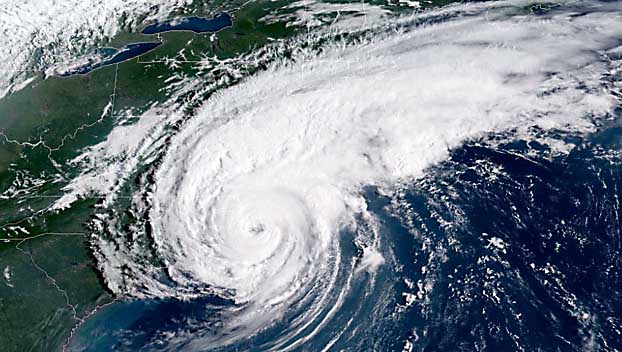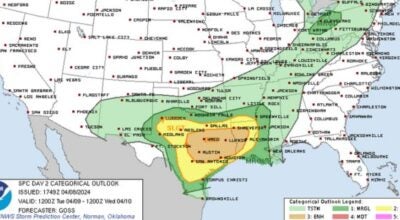Weak, but still dangerous Dorian makes U.S. landfall after devastating Bahamas and creating scare along east coast
Published 8:18 am Friday, September 6, 2019
Hurricane Dorian howled over North Carolina’s Outer Banks on Friday — a much weaker but still dangerous version of the storm that wreaked havoc in the Bahamas — flooding homes in the low-lying ribbon of islands and throwing a scare into year-round residents who tried to tough it out.
Its winds down to 90 mph (145 kph), the Category 1 hurricane lashed homes and businesses with wind, rain and floodwaters as the storm’s center passed just off the islands, dangerously close to land.
“It’s bad,” Ann Warner, who owns Howard’s Pub on Ocracoke Island, said by telephone. “The water came up to the inside of our bottom floor, which has never had water.”
She said a skylight blew out and whitecaps coursed through her front yard and underneath her elevated house.
“We’re safe,” Warner added. “But it’s certainly a mess.”
Another Ocracoke Island resident, bookshop owner Leslie Lanier, texted: “We are flooding like crazy. It is in the houses, and there will be more before it stops.”
“Lots of people are getting water starting in their homes,” Lanier added. “I have been here 32 years and not seen this.”
As of 8 a.m. EDT, Dorian’s eye was 10 miles off Cape Hatteras, North Carolina, as the storm moved northeast at 14 mph (22 kph). It is expected to remain a hurricane as it sweeps up the Eastern Seaboard on Friday and Saturday, far enough offshore that its hurricane-force winds are unlikely to reach land.
More than 370,000 people were without electricity in the Carolinas and Virginia as Dorian moved up the coast.
At least four people were killed in the Southeast. All were men in Florida or North Carolina who died in falls or by electrocution while trimming trees, putting up storm shutters or otherwise getting ready for the hurricane.
On the Outer Banks, forecasters said large and destructive waves could reach nearly to the ceilings of one-story structures along the 200-mile (320-kilometer) string of islands.
“Do not let your guard down,” Dare County emergency managers warned people who insisted on riding out the storm.
As Dorian closed in, many people on the Outer Banks tied down their boats, removed objects from their yards that could blow away, and hunkered down. Warner said about half the 1,000 residents of Ocracoke stuck it out.
At the start of the week, Dorian slammed the Bahamas with 185 mph (295 kph) winds, killing at least 30 people and obliterating countless homes. From there, it swept past Florida and Georgia at a relatively safe distance, then sideswiped the Carolinas on Thursday, spinning off tornadoes that peeled away roofs and flipped recreational vehicles.
Still, the damage was far less than feared in many parts of the Carolinas, including historic Charleston, South Carolina, which is prone to flooding even from ordinary storms, and Wilmington, North Carolina, the state’s biggest coastal city.
“We prepared for the worst and that didn’t happen. That’s OK. I was a little worried back when it was a Category 3. We got lucky,” said Ross Page, who walked his dogs in downtown Wilmington on Friday morning.
Joseph Pawlick went out to rake leaves, twigs and other debris blown from the sidewalk outside his downtown Wilmington home. “I slept like a baby last night. This, thankfully, was not bad,” he said.






